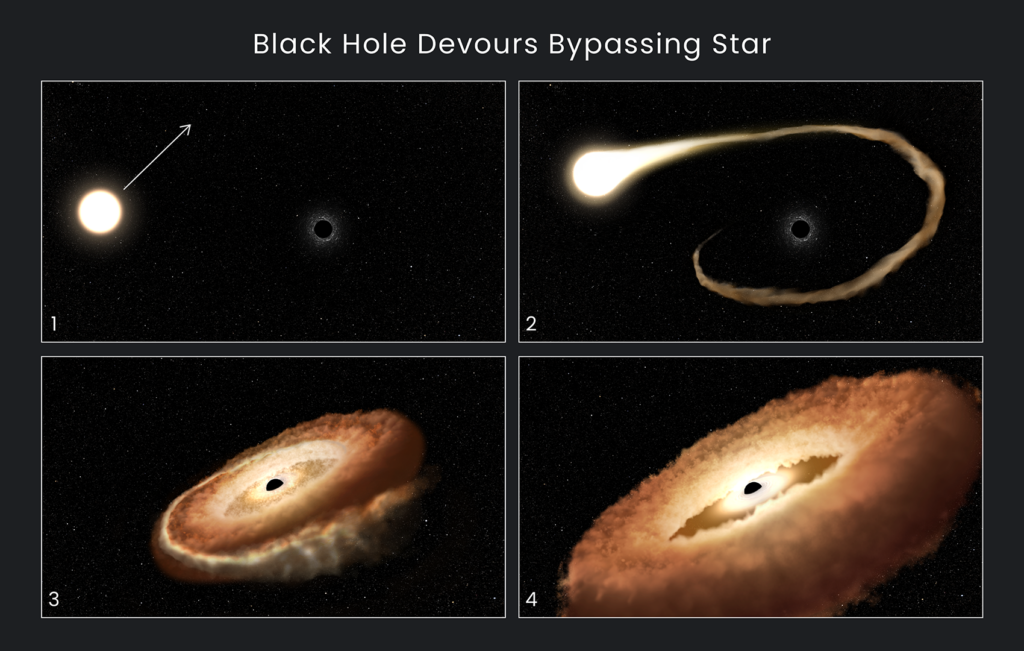The Hubble Space Telescope has managed to capture the last moments of the life of a star that came too close to a black hole. The unlucky luminary was “spagettified”, after which its remains took the form of a bagel.

The tidal disruption event described above was recorded on March 1, 2022. It occurred in a galaxy located 300 million light-years from the Milky Way. The flare accompanying the death of the star was initially recorded by ground-based telescopes, after which Hubble joined the observations.
Due to the very long distance, even Hubble could not directly photograph the deceased star. However, its observations in the ultraviolet range turned out to be enough to conduct a spectral analysis and restore the picture of what happened.
Hubble data showed that the black hole was surrounded by a very bright bagel-shaped region consisting of gas heated to enormous temperatures. It is comparable in size to the Solar System. This is all that remains of the lost star. The gas moves around the black hole and is the source of a powerful “wind”, which speed is about 3% of the speed of light.
To date, astronomers have managed to record about a hundred events of tidal destruction of stars. But this is the first time astronomers have managed to make detailed observations in the ultraviolet range. It is worth noting that by the standards of individual galaxies, the destruction of a star by a black hole is a very rare event that occurs approximately once every 100 thousand years.
Recall that astronomers recently found a record-close pair of supermassive black holes.
According to https://www.nasa.gov
Follow us on Twitter to get the most interesting space news in time
https://twitter.com/ust_magazine

